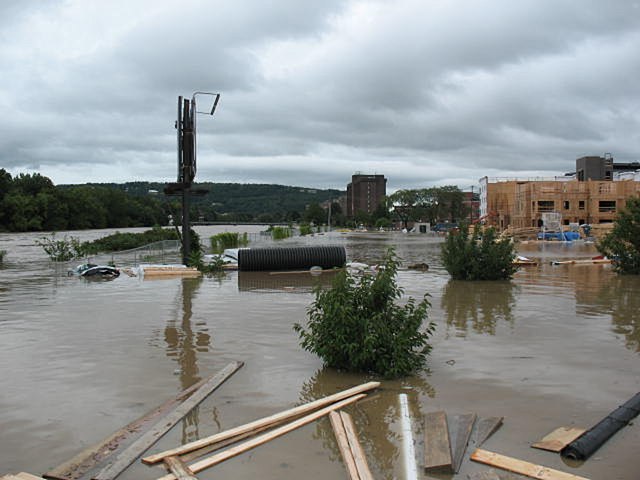Binghamton metropolitan area
The Binghamton Metropolitan Statistical Area, also called Greater Binghamton or the Triple Cities, is a region of southern Upstate New York in the Northeastern United States, anchored by Binghamton. The MSA encompasses Broome and Tioga counties, which together had a population of 247,138 as of the 2020 census. From 1963 to 1983, the MSA also included neighboring Susquehanna County in Pennsylvania, part of which still falls in the Binghamton, NY–PA Urban Area. In addition to these three counties, the greater region includes parts of Delaware and Chenango counties in New York; portions of Cortland and Otsego counties in New York and Wayne County, Pennsylvania are sometimes considered part of the region as well. Using the definition of a 30-mile radius from Binghamton, the population as of the 2010 census is 317,331.

Clockwise from top: Downtown Binghamton skyline, the Endicott Johnson Square Deal Arch, the South Washington Street Bridge, the Ross Park Zoo carousel, Court Street Historic District, downtown in winter, and the Spiedie Fest and Balloon Rally
Binghamton is a city in the U.S. state of New York, and serves as the county seat of Broome County. Surrounded by rolling hills, it lies in the state's Southern Tier region near the Pennsylvania border, in a bowl-shaped valley at the confluence of the Susquehanna and Chenango Rivers. Binghamton is the principal city and cultural center of the Binghamton metropolitan area, home to a quarter million people. The city's population, according to the 2020 census, is 47,969.
Clockwise from top: Downtown Binghamton skyline, the Endicott Johnson Square Deal Arch, the South Washington Street Bridge, the Ross Park Zoo carousel, Court Street Historic District, downtown in winter, and the Spiedie Fest and Balloon Rally
Former DL&W Station, part of the Railroad Terminal Historic District
Court Street, c. 1910
Flooding in 2011 due to the remnants of Tropical Storm Lee




